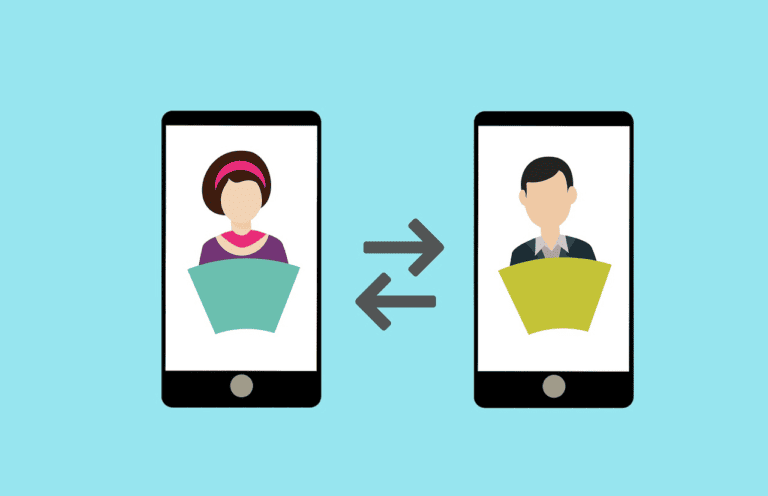Personality and Decision Making – Shape Your Choices
|
Getting your Trinity Audio player ready...
|
Understanding how your personality influences your decision-making process can help you make wiser choices in life. Your individuality and unique traits play a significant role in the decisions you make. By taking personality tests and assessments, you can gain insights into your decision-making style and learn to integrate your personality into your decision-making process.
Key Takeaways:
- Your personality traits shape your decision-making process and style.
- Personality tests and assessments can provide insights into your decision-making style.
- Integrating your personality into your decision-making process can lead to wiser choices.
- Understanding the influence of your personality on decision making can help enhance self-awareness.
- Awareness of your decision-making style can contribute to personal growth and development.
The Impact of Personality on Decision Making
Your personality plays a significant role in shaping your decision-making process. It is a unique combination of both nature and environment, influenced by your experiences and the events that happen to you. Your personality traits define your views, preferences, and the way you approach decision making. Understanding your own personality can help you make decisions that align with who you are.
There are different types of decision-making styles based on personality traits. Some individuals tend to be measured and considered in their decision-making process, carefully analyzing all available information before making a choice. Others may be more impulsive and instinctive, relying on their gut feelings and quick judgments. And some may have a combination of both styles, depending on the situation.
By understanding your personality traits and their influence on your decision-making style, you can navigate through choices more effectively. It enables you to make decisions that reflect your genuine self, considering your inherent strengths and weaknesses. Knowing how you tend to approach decisions can also help you recognize and overcome any biases or blind spots that may hinder effective decision making.
For example, individuals with extroverted personalities may prefer collaborative decision-making processes, while introverted individuals may excel in making decisions independently, having the ability to focus and reflect. The Myers-Briggs Type Indicator (MBTI) is a popular personality assessment tool that identifies various personality types and their underlying characteristics. This assessment can provide valuable insights into your decision-making style.
The Science of Decision Making
When it comes to decision making, our brains are complex machines. Various parts of the brain, such as the prefrontal cortex and the amygdala, play crucial roles in this cognitive process. Understanding the science behind decision making can help us make more informed and intentional choices.
Our decisions are influenced by a wide range of factors, including cognitive biases, emotions, and social norms. Cognitive biases are mental shortcuts that can lead us astray, causing us to make irrational or flawed decisions. For example, confirmation bias occurs when we selectively interpret information that confirms our pre-existing beliefs, while availability heuristic leads us to rely on easily accessible information when making judgments.
Emotions are another powerful force that can sway our decision making. We’ve all experienced making impulsive choices based on strong emotions, such as fear or desire. Emotions can cloud our judgment and inhibit rational decision making.
Furthermore, social norms exert significant influence over our choices. We often conform to societal expectations and adopt the preferences and behaviors of those around us. This can influence everything from what we wear to the career paths we choose.
Being aware of these factors can help us navigate the decision-making process more effectively. By recognizing cognitive biases, we can challenge our assumptions and strive for more objective, rational choices. Emotionally intelligent decision making involves understanding how our feelings may be influencing our judgments and taking steps to regulate our emotions. Additionally, questioning societal norms can enable us to make choices that align with our true values and desires.
“The cognitive biases, emotions, and social norms that shape our decision making can be both a blessing and a curse. Understanding the science behind these influences empowers us to make choices that align with our true selves.”
The Impact of Cognitive Biases on Decision Making
Cognitive biases have a profound impact on our decision making. They can lead to systematic errors and prevent us from making optimal choices. By understanding common cognitive biases, we can be more mindful of their influence and make decisions that are grounded in reason and logic.
| Cognitive Bias | Description |
|---|---|
| Confirmation Bias | Tendency to seek out and interpret information in a way that confirms our pre-existing beliefs. |
| Availability Heuristic | Relying on information that is readily available in our memory when making judgments or decisions. |
| Anchoring Bias | Tendency to rely too heavily on the first piece of information encountered when making decisions. |
| Sunk Cost Fallacy | Tendency to continue investing in a course of action simply because we have already invested time, money, or effort into it, even if it no longer serves us. |
| Loss Aversion | Strong preference for avoiding losses over acquiring gains of the same value. |
| Bandwagon Effect | Adopting certain beliefs or behaviors because many others are doing so. |
By recognizing these biases, we can take steps to mitigate their effects and make more logical and informed decisions.
The Importance of Making Conscious Choices
Making conscious choices plays a crucial role in shaping our lives and determining the outcomes we experience. When we approach decision making with awareness and thoughtfulness, we can weigh the options, consider the pros and cons, and select the most appropriate course of action. By doing so, we can avoid the negative consequences that may arise from making choices without conscious consideration.
When we make impulsive or hasty decisions without conscious thought, we may overlook important factors, disregard potential risks, or fail to consider alternative solutions. These unconscious choices can lead to unfavorable outcomes, leaving us feeling regretful or dissatisfied with the results. However, by consciously engaging in the decision-making process, we can minimize the likelihood of negative consequences and optimize our chances for positive outcomes.
Conscious choices are those that align with our values, priorities, and long-term goals. They reflect a deeper understanding of ourselves and our desires, allowing us to make decisions that are in line with our authentic selves. These choices are guided by self-awareness, intuition, and a clear understanding of what truly matters to us.
Let’s take a look at the positive outcomes and benefits that can arise from making conscious choices:
- Alignment with personal values: Making conscious choices allows us to honor our personal values and principles, ensuring that our actions are in line with what we believe in.
- Fulfillment and satisfaction: Conscious choices can lead to a greater sense of fulfillment and satisfaction, as they reflect our true desires and aspirations.
- Improved decision-making skills: By actively engaging in the decision-making process, we can enhance our critical thinking abilities and become better equipped to make informed choices in the future.
- Increased self-confidence: Making conscious choices reinforces our sense of self-confidence and self-trust, as we demonstrate our ability to make decisions that are aligned with our own needs and desires.
- Greater control over our lives: Conscious choices empower us to take control of our lives and shape our own destinies, rather than passively allowing circumstances or external influences to dictate our choices.
By making conscious choices, we take ownership of our decisions and actively participate in creating the life we desire. It allows us to cultivate a fulfilling and purposeful existence, where our actions align with who we truly are and lead to positive outcomes.
The Power of Conscious Choices
| Positive Outcomes | Negative Consequences |
|---|---|
| Alignment with personal values | Ignoring personal values |
| Fulfillment and satisfaction | Regret and dissatisfaction |
| Improved decision-making skills | Poor decision-making skills |
| Increased self-confidence | Lack of self-confidence |
| Greater control over our lives | Feeling powerless and controlled by circumstances |
Choosing Your Priorities
When it comes to making conscious choices, one of the most important steps is to choose your priorities. By understanding your values and goals, you can identify what truly matters to you and make decisions that align with your priorities. But how do you go about choosing your priorities? Let’s dive in.
Reflect on Your Values and Goals
Start by taking a moment to reflect on your values and goals. What do you hold dear in life? What are you working towards? Your values and goals serve as a compass, guiding you in the decision-making process. Consider what brings you joy, fulfillment, and a sense of purpose, and let those be your guiding lights.
Consider Your Constraints
Next, it’s important to consider your constraints. We all have limitations, whether it’s time, resources, or other commitments. Recognizing these constraints can help you set realistic expectations and make choices that are attainable. Take a step back and assess the practicality and feasibility of each option in light of your current constraints.
Rank Your Priorities
Once you have identified your values and goals and considered your constraints, it’s time to rank your priorities. This step allows you to establish a clear order of importance. Think about what matters most to you and assign a priority level to each objective. This will aid you in making decisions that align with your highest priorities.
Set Clear Boundaries and Practice Saying No
Lastly, to ensure that you stick to your priorities, it’s crucial to set clear boundaries and practice saying no. Opportunities and distractions may arise along the way, but staying focused requires the ability to decline situations that don’t align with your chosen priorities. Remember, saying no to something means saying yes to what truly matters.
By choosing your priorities thoughtfully, you can make decisions that are in harmony with your values and goals. Let your priorities guide you on your journey, and remember to reassess and adjust them as needed.
Examples of Prioritization Techniques
| Technique | Description |
|---|---|
| ABC Analysis | A technique that categorizes tasks or goals into three levels: A (high priority), B (medium priority), and C (low priority). This helps you focus on the most important tasks and allocate your time and resources accordingly. |
| Eisenhower Matrix | A prioritization framework that divides tasks into four categories: urgent and important, important but not urgent, urgent but not important, and neither urgent nor important. This method helps you distinguish between tasks that require immediate attention and those that can be postponed or delegated. |
| Pareto Principle | Also known as the 80/20 rule, this principle suggests that 80% of the results come from 20% of the efforts. By identifying the vital few tasks that yield the most significant results, you can focus on the activities that will make the most impact. |
Strategies for Making Difficult Choices
Making difficult choices can be challenging. These decisions often require careful consideration of the pros and cons, as well as an evaluation of the potential risks and rewards. It’s important to recognize that these choices may have long-term consequences that can greatly impact your life. When faced with difficult decisions, employing effective decision-making strategies can help guide you towards the best possible outcome.
- Clarify your values and priorities: Reflect on what truly matters to you and what aligns with your core values. This will provide a solid foundation for your decision-making process.
- Gather information: Conduct thorough research and gather as much relevant information as possible. This will enable you to make an informed decision, based on factual data and insights.
- Weigh the pros and cons: Consider the advantages and disadvantages of each available option. Assess the potential benefits and drawbacks, as well as the short-term and long-term implications.
- Listen to your intuition: Pay attention to your gut feelings and instincts. Sometimes your intuition can provide valuable guidance when making difficult choices.
- Consider the long-term implications: Think about how each decision may impact your future. Consider the potential consequences and outcomes that may arise over time.
- Seek support: Reach out to trusted friends, family members, or mentors who can provide different perspectives and support you in making your decision.
- Take action: Once you have evaluated your options and weighed the considerations, take action to implement your decision. Remember that taking action is crucial for moving forward and pursuing your goals.
By applying these strategies, you can navigate the complexity of difficult choices with more confidence and clarity. Making informed decisions that are aligned with your values and priorities increases the likelihood of achieving positive outcomes and personal growth.
Example Decision-Making Strategy
“When faced with a difficult choice, I always start by clarifying my values and priorities. Understanding what truly matters to me helps me filter through the options and focus on what aligns with who I am. I then gather as much information as possible, weighing the pros and cons of each option. During this process, I also listen to my intuition and consider the long-term implications. Seeking support from trusted confidants provides me with different perspectives and valuable insights. Finally, I take action, knowing that I am making the best decision with the information available to me.” – Sarah Peterson, Decision Strategist
Embracing Change Through Your Choices
Making choices that embrace change is key to personal growth and development. By embracing new experiences, learning from failure, developing a growth mindset, taking calculated risks, and cultivating resilience, you can create new opportunities for yourself. These choices allow you to expand your horizons, push your boundaries, and unlock your full potential.
When you embrace change, you open yourself up to endless possibilities and growth. It requires stepping out of your comfort zone and facing uncertainty with optimism and courage. Embracing change is not always easy, but the rewards are worth it.
“The only way to make sense out of change is to plunge into it, move with it, and join the dance.” – Alan Watts
Learning from Failure
Failure is often seen as a setback, but it is also an opportunity for growth. When you embrace change, you are willing to take risks and accept that failures are part of the journey. By learning from your mistakes and setbacks, you gain valuable insights, develop resilience, and discover new ways to approach challenges.
Developing a Growth Mindset
A growth mindset is the belief that your abilities and intelligence can be developed through dedication and hard work. When you have a growth mindset, you see challenges as opportunities for learning and growth. This mindset allows you to embrace change and view it as a chance to acquire new skills, overcome obstacles, and reach greater heights.
Taking Calculated Risks
Embracing change involves taking calculated risks. Rather than shying away from uncertainty, you assess the potential benefits and drawbacks of a situation and make informed decisions. These calculated risks push you out of your comfort zone, expand your capabilities, and lead to new experiences and opportunities.
Cultivating Resilience
Resilience is the ability to bounce back from adversity and adapt to change. When you cultivate resilience, you develop inner strength and the capacity to overcome obstacles. Embracing change requires resilience because it often involves stepping into unknown territory and facing challenges. By cultivating resilience, you can navigate the difficulties that come with change and emerge stronger and more resilient than before.
| Embracing Change Through Your Choices |
|---|
By embracing change and making choices that align with personal growth goals, you can:
|
Developing Decision-Making Skills
Enhancing your decision-making skills involves nurturing self-awareness and practicing mindfulness. By paying attention to your thoughts, emotions, and behaviors, you can gain a deeper understanding of the choices you make and the factors that influence them.
One way to improve your decision-making skills is through the practice of mindfulness. Mindfulness is the act of being fully present in the moment, without judgment. It involves observing your thoughts and feelings without getting caught up in them. This awareness can help you make decisions that are in line with your values and priorities.
“Mindfulness is the key to unlocking your self-awareness and understanding your decision-making process.” – Dr. Angela Watson
Reflecting on your past decisions can also contribute to the development of your decision-making skills. Take the time to evaluate the outcomes of your previous choices and consider how they align with your goals. This reflection can provide valuable insights and inform future decisions.
Furthermore, acquiring new skills and knowledge can enhance your overall decision-making abilities. By expanding your understanding of different domains, you can make more informed choices and adapt to a variety of situations.
A Practical Exercise: Reflecting on Past Decisions
Take a moment to reflect on a recent decision you made:
- What were the options you considered?
- What factors influenced your decision-making process?
- What was the outcome of your decision?
- Did it align with your values and priorities?
- What could you have done differently?
Engaging in this type of self-reflection can help you become more aware of your decision-making patterns and enable you to make more conscious choices in the future.
In summary, developing your decision-making skills requires cultivating self-awareness, practicing mindfulness, reflecting on past decisions, and acquiring new knowledge. By honing these skills, you can make thoughtful choices that align with your values and lead to positive outcomes.
Surrounding Yourself with Diverse Perspectives
Expanding your horizons and seeking diverse perspectives can be a powerful catalyst for personal growth and improvement in your decision-making process. By surrounding yourself with people from different backgrounds, cultures, and age groups, you open yourself up to a world of diverse insights and experiences.
Engaging in meaningful conversations and sharing ideas with trustworthy individuals who hold different viewpoints challenges your own thinking and broadens your mindset. It allows you to see situations from multiple angles and consider alternative approaches to problem-solving. When you expose yourself to diverse perspectives, you gain a better understanding of the complexities of decision-making and become more receptive to new ideas.
“The clash of ideas is the sound of freedom” – Lady Bird Johnson
Embracing New Viewpoints and Shaping Your Decisions
Every interaction with someone from a unique background contributes to your personal growth and enhances your decision-making skills. It helps you develop empathy, patience, and the ability to see beyond your own biases. By seeking out diverse perspectives, you become aware of your own blind spots and expand your capacity for critical thinking and sound judgment.
When you embrace diverse perspectives, you become more adaptable and open-minded, enabling you to make decisions that are inclusive, well-informed, and considerate of different viewpoints. By integrating these varied viewpoints into your decision-making process, you increase the likelihood of making choices that align with your values and lead to positive outcomes.
| Benefits of Surrounding Yourself with Diverse Perspectives |
|---|
| 1. Enhanced creativity and innovation |
| 2. Improved problem-solving skills |
| 3. Greater cultural awareness |
| 4. Increased tolerance and acceptance |
| 5. Broadened worldview and critical thinking |
Embrace the richness that diverse perspectives offer and make it a priority to surround yourself with individuals who will challenge and inspire you. By incorporating these diverse insights into your decision-making process, you will continue to evolve personally and professionally, becoming a more well-rounded and effective decision-maker.
Taking Action and Overcoming Fear of Failure
When it comes to decision-making, taking action is crucial in moving forward and overcoming the fear of failure. Many people are often paralyzed by the thought of making the wrong choices, but it’s important to realize that not making a decision is also a choice in itself. Instead of letting fear hold you back, embrace the idea that it’s better to make a wrong decision than to make no decision at all.
Taking calculated risks is an important part of the decision-making process. It involves carefully weighing the potential outcomes and considering the likelihood of success or failure. By embracing the possibility of failure, you can build resilience and learn valuable lessons along the way.
Learning from failure is a powerful tool that can lead to personal growth and improvement in your decision-making process. Each failure provides an opportunity to reflect, learn, and make better choices in the future. As Thomas Edison once said, “I have not failed. I’ve just found 10,000 ways that won’t work.”
“Embracing the idea that it’s better to make a wrong decision than no decision at all can empower you to take action.”
By taking action and making decisions, you gain valuable experience and knowledge that can inform your future choices. The fear of failure can often stem from a lack of confidence, but by confronting your fears head-on and taking action, you can build self-assurance and trust in your decision-making abilities.
The Power of Failure: Personal Stories
-
Chris Gardner, the inspiration behind the movie “The Pursuit of Happyness,” faced numerous failures and rejections before achieving success.
-
Steve Jobs was famously fired from Apple, the company he co-founded, only to return years later to lead it to unprecedented success.
-
J.K. Rowling, the author of the Harry Potter series, faced multiple rejections before finding a publisher who recognized the potential of her work.
These individuals didn’t let the fear of failure deter them from pursuing their goals. They took action, learned from their failures, and ultimately achieved extraordinary success.
Overcoming the fear of failure is a transformative process that can propel you forward in your decision-making journey. By taking action and embracing the lessons that come with failure, you can become more resilient, confident, and proactive in your decision-making process.
Conclusion
Developing your decision-making skills and understanding how your personality influences your choices can have a significant impact on your personal growth and success. By making conscious choices that align with your values and priorities, you can shape your decisions in a way that reflects who you are and leads to positive outcomes.
Embracing change, taking action, and learning from both success and failure can further enhance your decision-making abilities. By embracing the idea that it’s better to make a wrong decision than no decision at all, you can overcome the fear of failure and empower yourself to take action.
Make the most of your unique personality and decision-making style to navigate life’s challenges and create a fulfilling future. By practicing self-awareness, mindfulness, and surrounding yourself with diverse perspectives, you can continue to grow and make conscious choices that contribute to your personal development and overall well-being.







